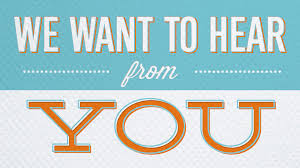Student Surveys, Data, and Protocols for Mentoring Conversations
Why is it important to include student perspectives in our teaching?
Our students can tell us how we are doing by sharing how they are learning and what we might do differently.
A high school student shares how her teachers made a difference to her learning.
High school students share their insights and advice for beginning teacher success.
How do we capture student perspectives and gather data?
Students want to give us feedback to help us help them learn. Anonymous surveys using paper or index cards, e-surveys, one-one interviews,and small focus groups can be used to gather data. Smiley faces for younger students and multiple choice options work well too.
Students and mentors share the importance of keeping surveys anonymous.
This discussion shares key ideas and insights related to why student surveys are important.
A Mentor and Novice Teacher Reflect on the Use of Student Surveys
What does a survey look like?
It is important to create a survey for the age group of your students. Younger students may have another adult read the questions and they can point to the smiley face that relates. Older students are able to complete their own survey.
A mentor shares how she developed an elementary survey.
Using an Anonymous Survey With Elementary Students
Sample Surveys
How does a teacher administer a survey effectively?
Creating the questions is the key to an effective survey. Why are you designing a survey and what do you hope to learn?
Mentors and novices can work together to administer the surveys in each others’ classrooms.
Use these guidelines to think about ways to administer a survey so you get honest results.
Directions for Administering a Student Survey
Before a conversation is scheduled the mentor must aggregate the data to ensure student anonymity.
Aggregated Data Report
How does a mentor or coach discuss the survey data with the novice teacher?
The goal of collecting data either by survey or interview is to use the data to help the novice teachers improve their practice.
A mentor explains why a protocol is needed for a mentoring conversation that looks at anonymous aggregated data from surveys to ensure the novice reflects on the data.
Protocol for Integrating Student Perspectives
A mentor shares the protocol she uses to ensure she allows the novice teacher to reflect on the data.
Using a Seven Step Protocol to Discuss Survey Data With Novice Teachers
How do mentoring conversations vary by grade level?
In these authentic conversations mentors and mentees reflect on the data together and set goals for improving practices in the classroom.
These are short doable conversations that are held after school or during a preparation time.
Mentoring conversations will vary by grade level and type of survey tool used to gather data.
Discussing Student Surveys: Elementary School



